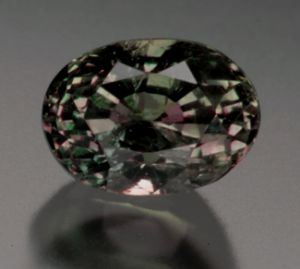Alexandrite

Alexandrite is the rare, phenomenal, color-change variety of the chrysoberyl mineral. Alexandrite can only form when aluminum and beryllium combine with trace elements like iron, titanium, and chromium, which causes color change and is very rarely found in nature. The unlikelihood of the rare element chromium being in the right place to combine with aluminum and beryllium under exactly the right conditions to create alexandrite is what makes it so rare and valuable. At 8.5 on the Mohs’ hardness scale, alexandrite is hard, tough , and durable for daily wear. Alexandrite is green or bluish-green in daylight, changing to raspberry red or purplish-red in incandescent light. Alexandrite can also exhibit the phenomenon of chatoyance or the “cat’s-eye effect” when cut en cabochon. Alexandrite can be an alternative birthstone for June. It was originally discovered in the Ural Mountains of Russia in the 1830’s.


